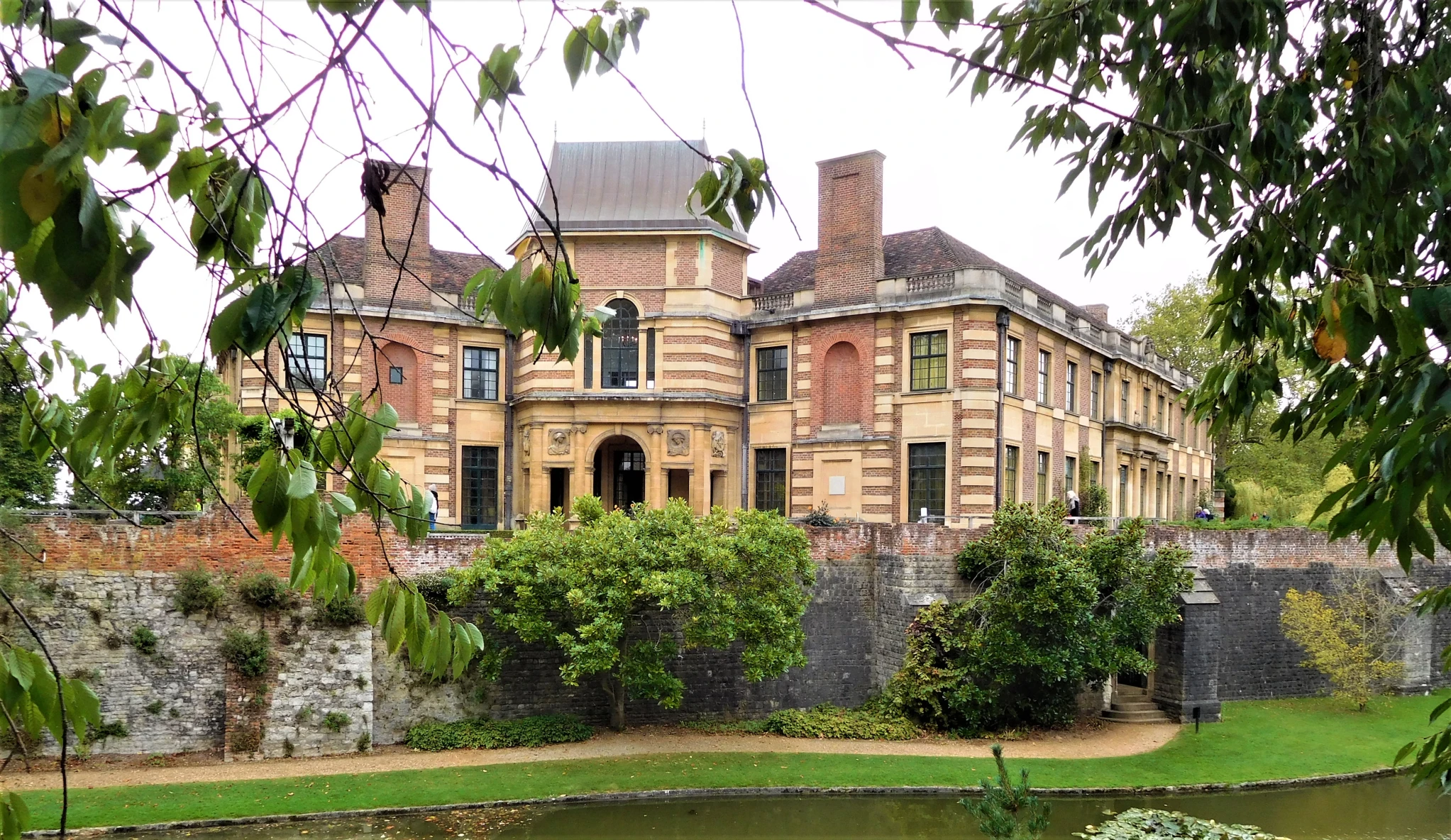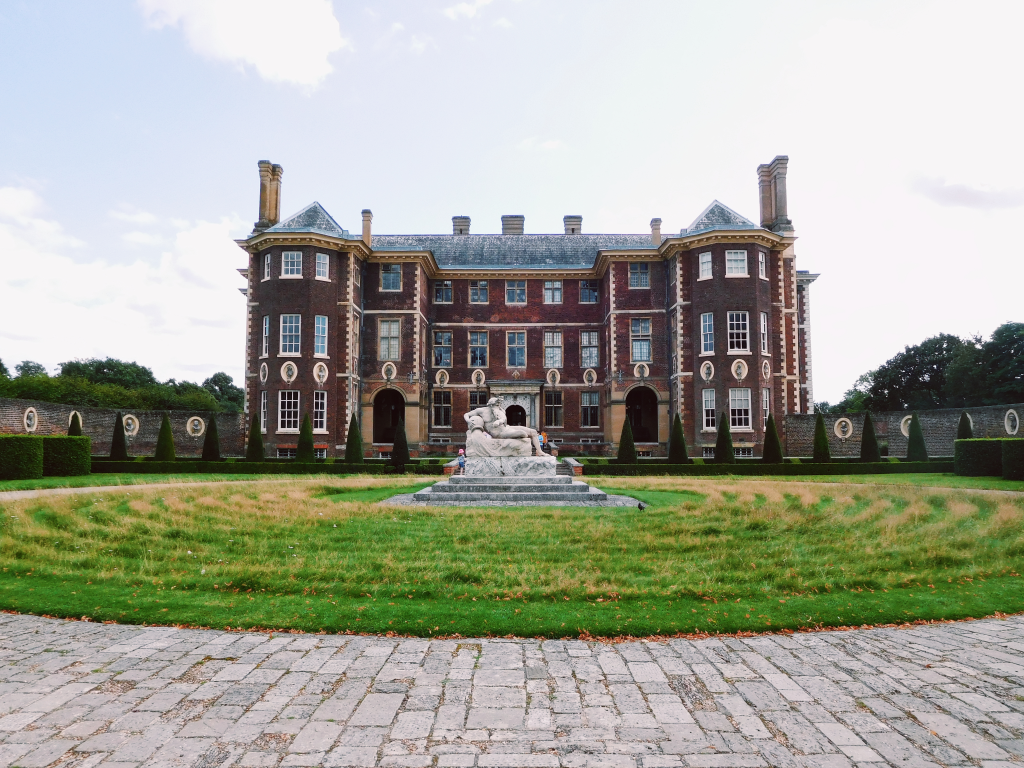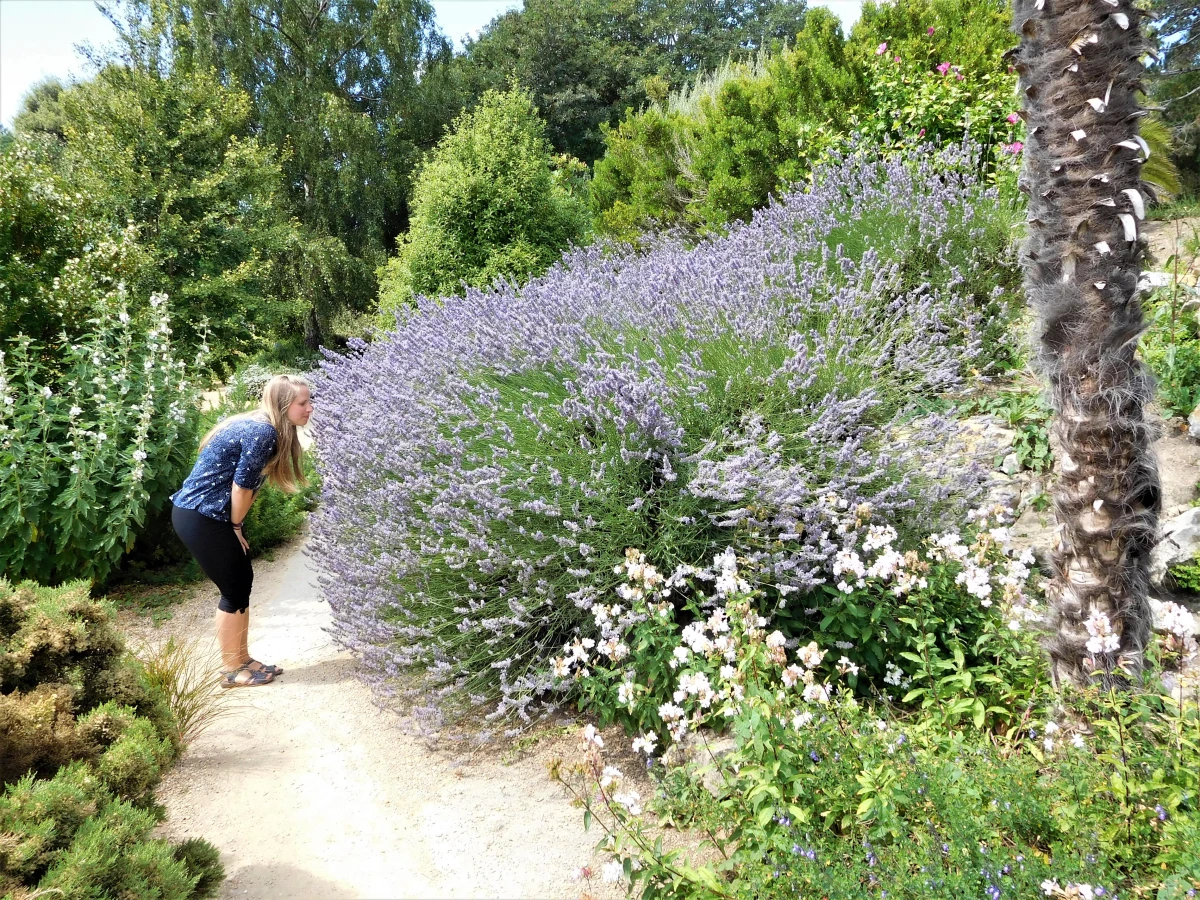Hi my lovely readers!
Happy New Year to all of you and welcome to 2021. I hope you all had a great start to the new year and were able to relax a little and recharge over the past days.
I cannot wait to fill this blog some more this year with inspiring and useful content for you guys while sharing some of my tips and experiences from my travels around the world and from the cruises I have been on.
Today, I want to introduce you to Eltham Palace, which is located in the Borough of Greenwich in South East London and is easily accessible by train. This hidden gem in terms of architecture and furniture is well worth a day trip. You will never expect to see what you will find inside, which I thought was brilliant.
Eltham Palace is a very unique and extraordinary place. It is known as a palace, but actually looks nothing like a palace at all nowadays. Today, it is an art deco heaven.
BRIEF HISTORY OF ELTHAM PALACE
Eltham Palace originally used to be a medieval Tudor palace, which was used by and housed many monarchs between the 14th and 16th century such as Edward II, who moved to Eltham Palace in 1305, back then it was still a manor house, until his death in 1311 as well as Henry VIII.
Many monarchs altered and enhanced Eltham Palace during their reign to turn the manor house into the magnificent palace it once was. Lodging, bathing facilities, more land for hunting and the walled garden were added and build. One of the important historic additions that luckily survived was the great hall, build by Edward IV in the 1470s.

Henry VIII spend much of his childhood at Eltham Palace and was the last monarch to invest money and time into Eltham Palace. He commissioned the work for new royal lodgings and a brick-built chapel. However, he never actually spend much time during his reign at Eltham as he preferred Hampton Court Palace as well as Greenwich, due to better accessibility to the river.
As the royals moved away from Eltham, the palace was no longer of importance and was poorly managed and maintained. It was sold by Parliament in 1651 to Colonel Nathaniel Rich, who stripped the palace of its resources such as the lead from the roof of the great hall and demolished many of the buildings.
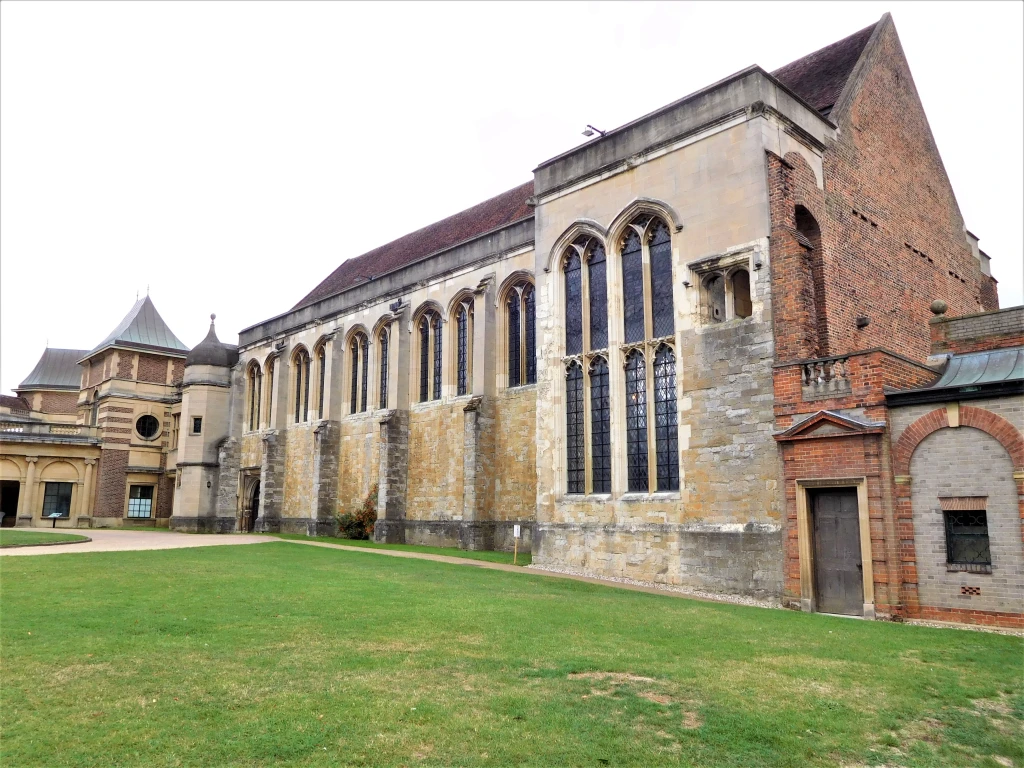
After falling into neglect for many, many years it was eventually leased in 1933 to Stephen and Virginia Courtauld, who brought new life to this historic site and transformed it into their home.
The Courtaulds decided to leave Eltham Palace in May 1944 after they got tired of the bombing during WWII. They got hit a few times and no longer wanted to retreat and hide all the time in their bomb shelter. Additionally, it became increasingly hard to host parties and live a normal life.
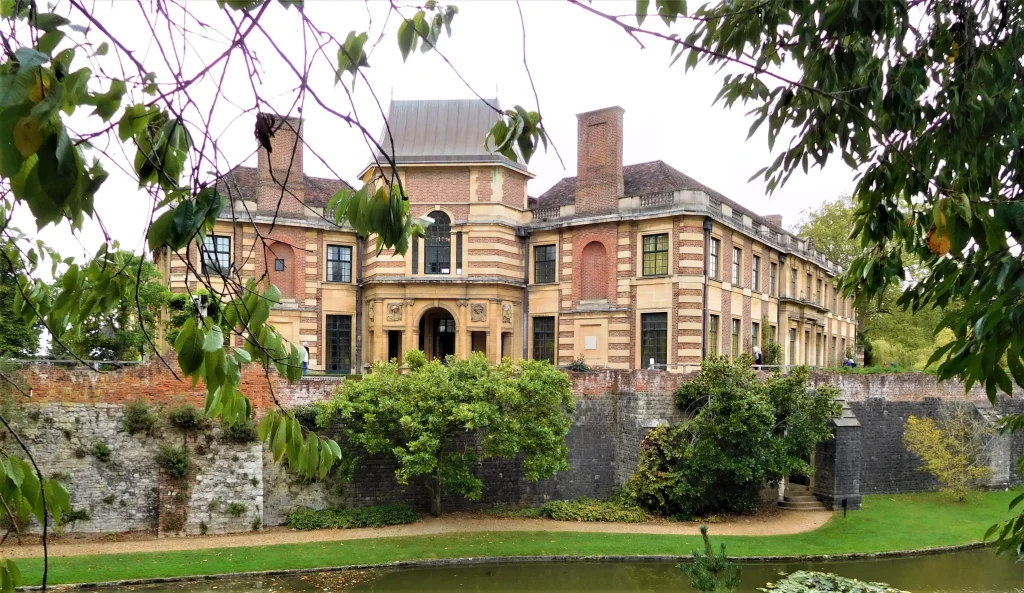
Eltham Palace got passed on to the Army Educational Corps, who had their base at Eltham until 1992 and ran Army school overseas, provided language training and assisted with resettlement for people that left the Army.
After the Army Educational Corps, the Ministry of Works started to look after Eltham Palace and in 1995 English Heritage, the current “owner”, took over management of the house and gardens.
THE HOUSE
The exterior of the house was inspired by Hampton Court Palace and also designed to match and be in line with the great hall. The interior on the other hand is a mix of old and new, historical and contemporary. Still, predominantly the art deco style can be examined and admired.
Below you can see the rooms that were on display and open to to the public when I visited back in October 2020 during Covid.
The Great Hall
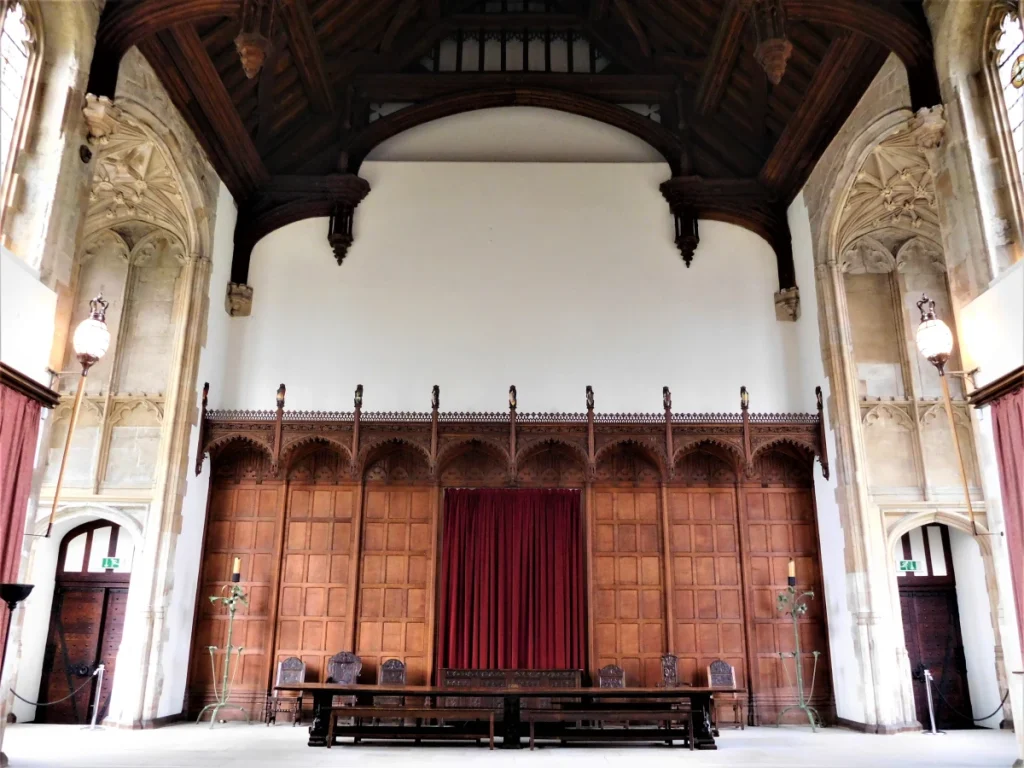
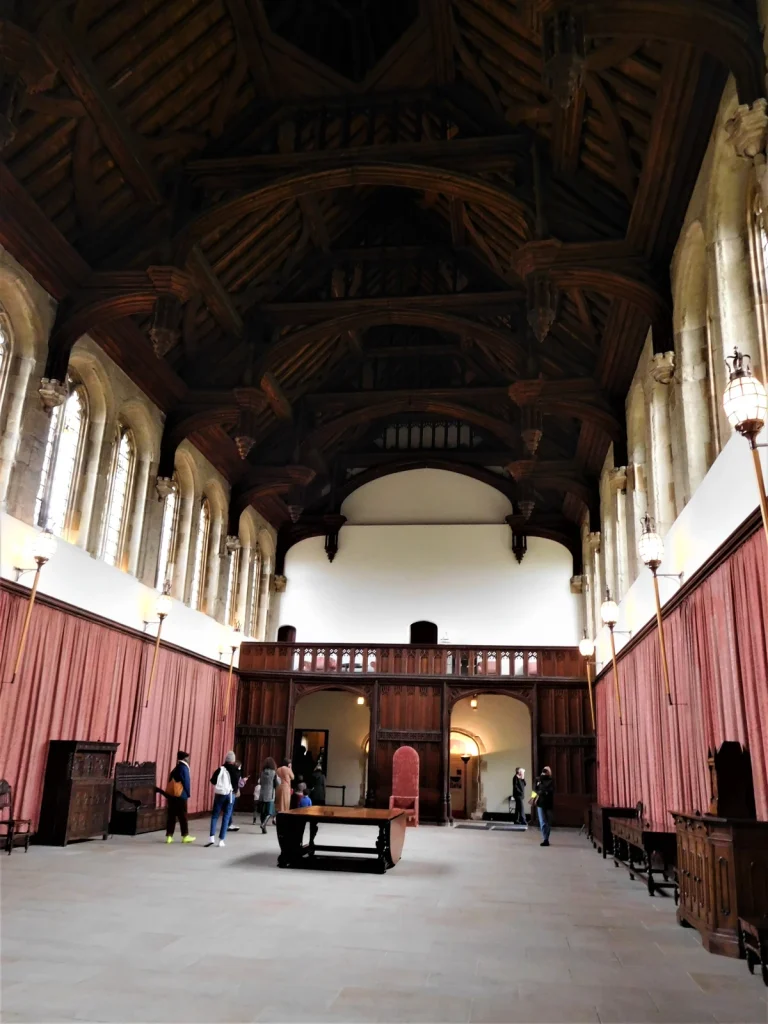
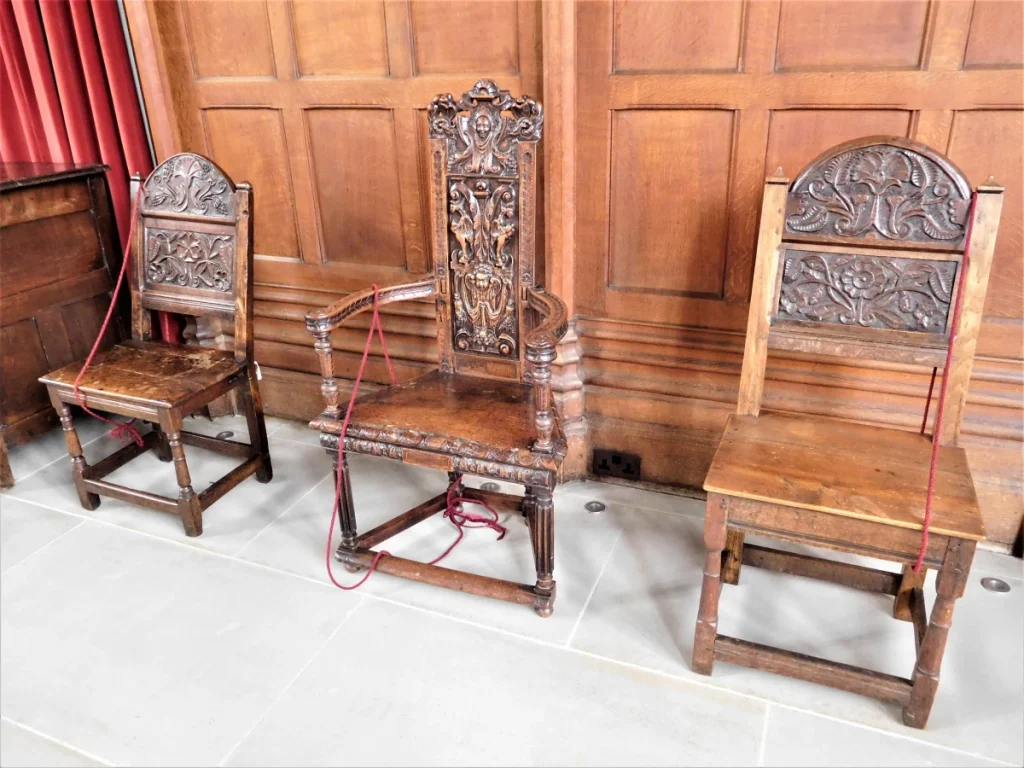
The great hall was build around the 1470s. It served as the center of Eltham Palace and was the heart of the palace to host lavish banquets and parties.
The Courtaulds restored the great hall and used it as their music room and to host drinks and parties.
The Dining Room
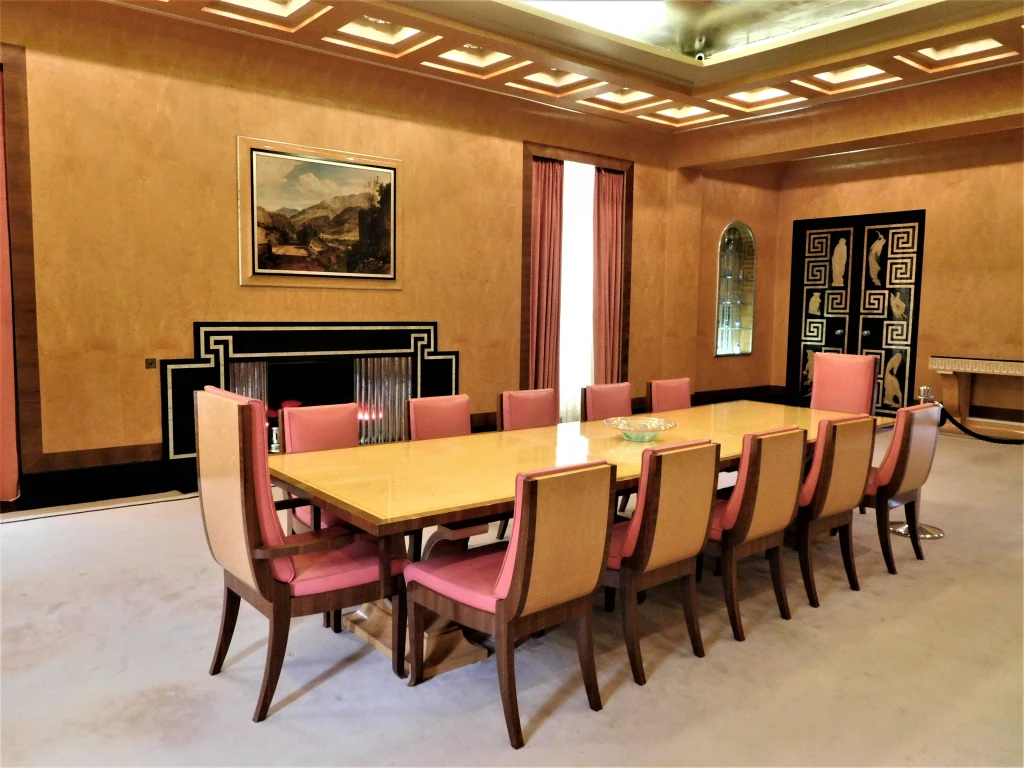
The Dining Room just screams art deco.
It has a Greek theme that is present throughout the room, which can often be found in art deco spaces. The Greek motifs are present in the ceiling, doors, fireplace and furniture such as side tables.
The Library
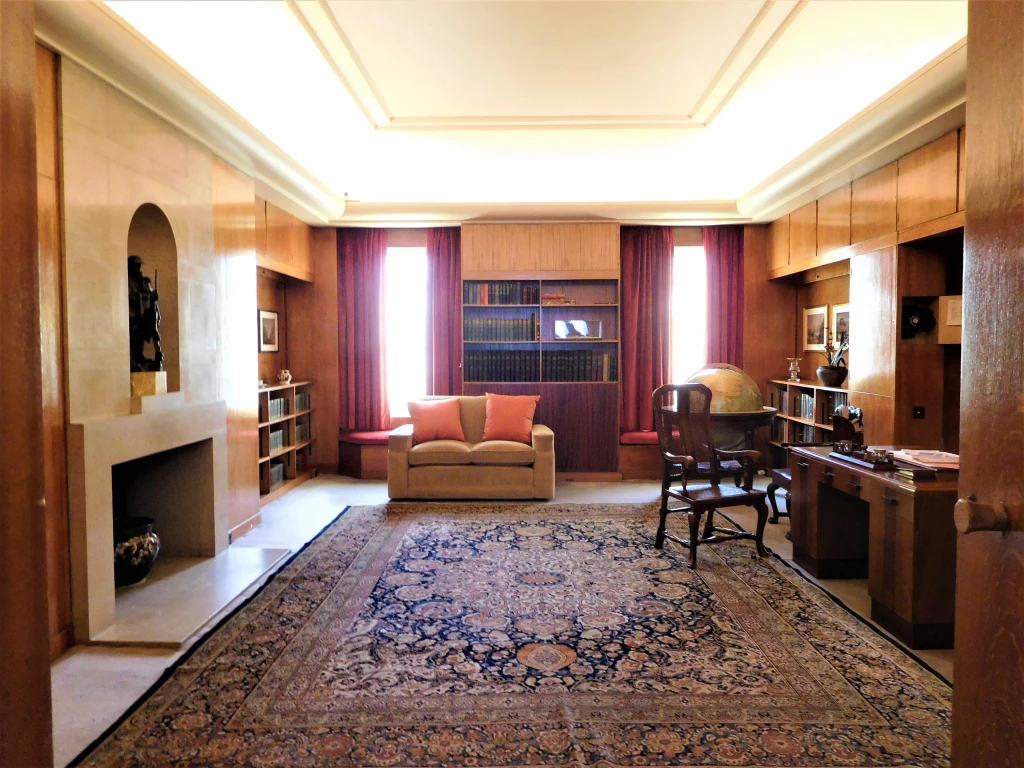
The library used to be Stephen Courtauld private working space, his own office. He kept his book collection here as well as his coin and porcelain collection.
The Map Room
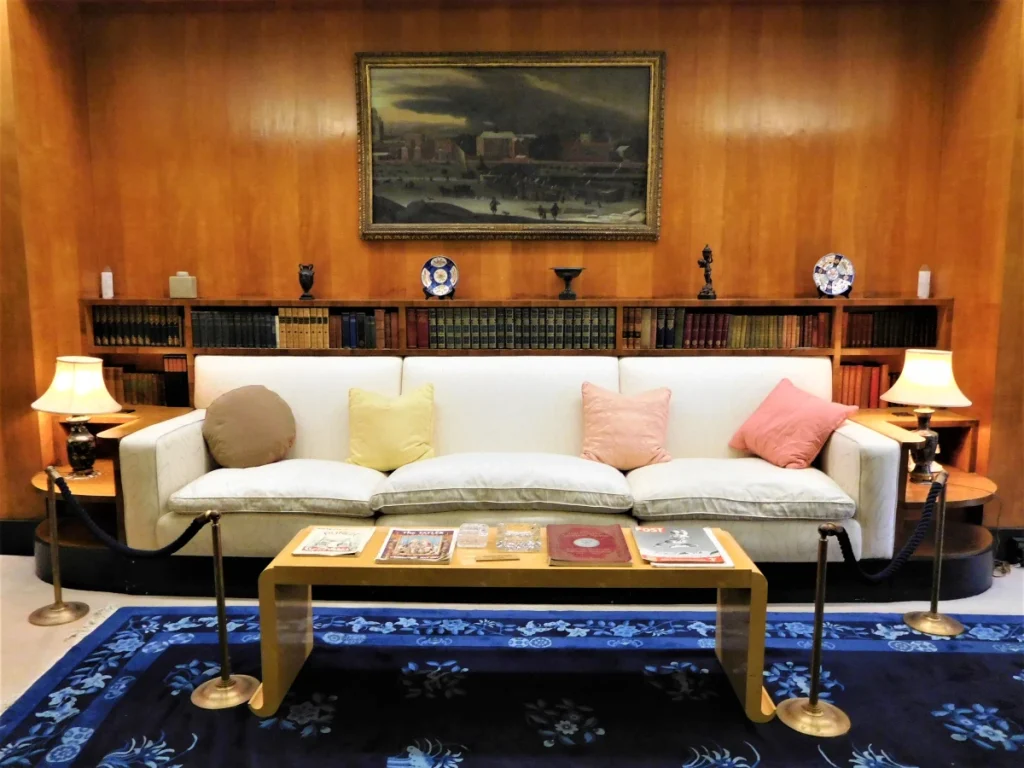
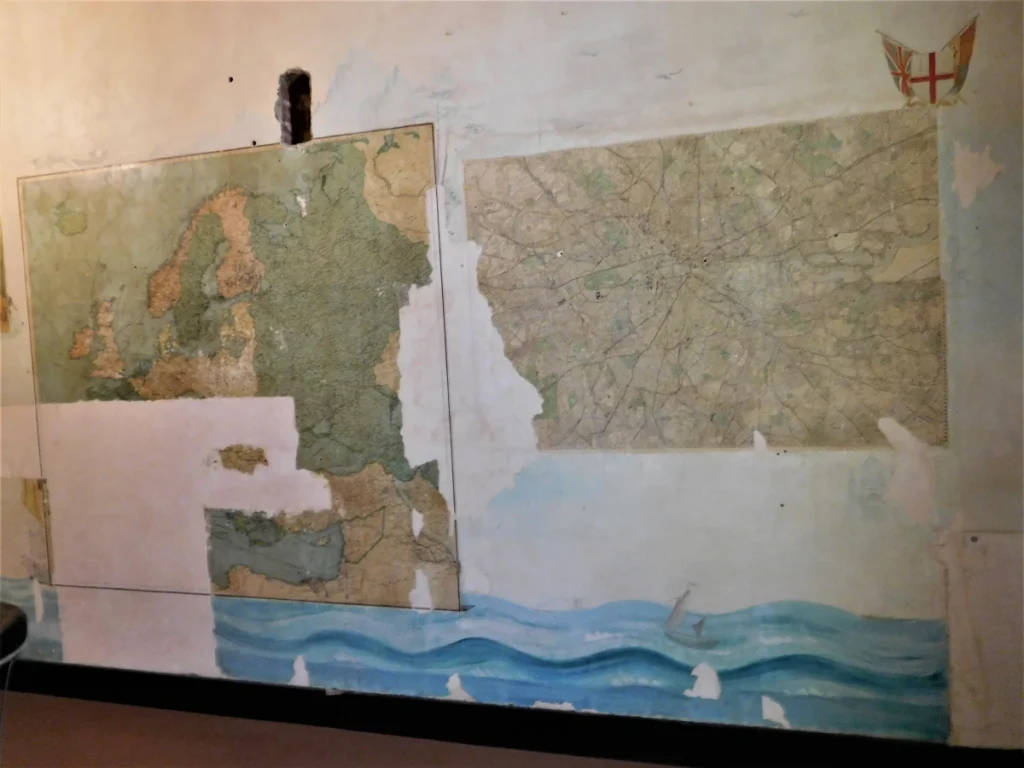

The map room accessible from this sitting room that was mainly used as a retreat room, displays old maps that are linked to the Courtauld’s travels around the world.
These old maps were just recently discovered by English Heritage as many were covered by wallpaper and layers of paint.
Virginia Courtauld’s Bedroom and En-Suite Bathroom

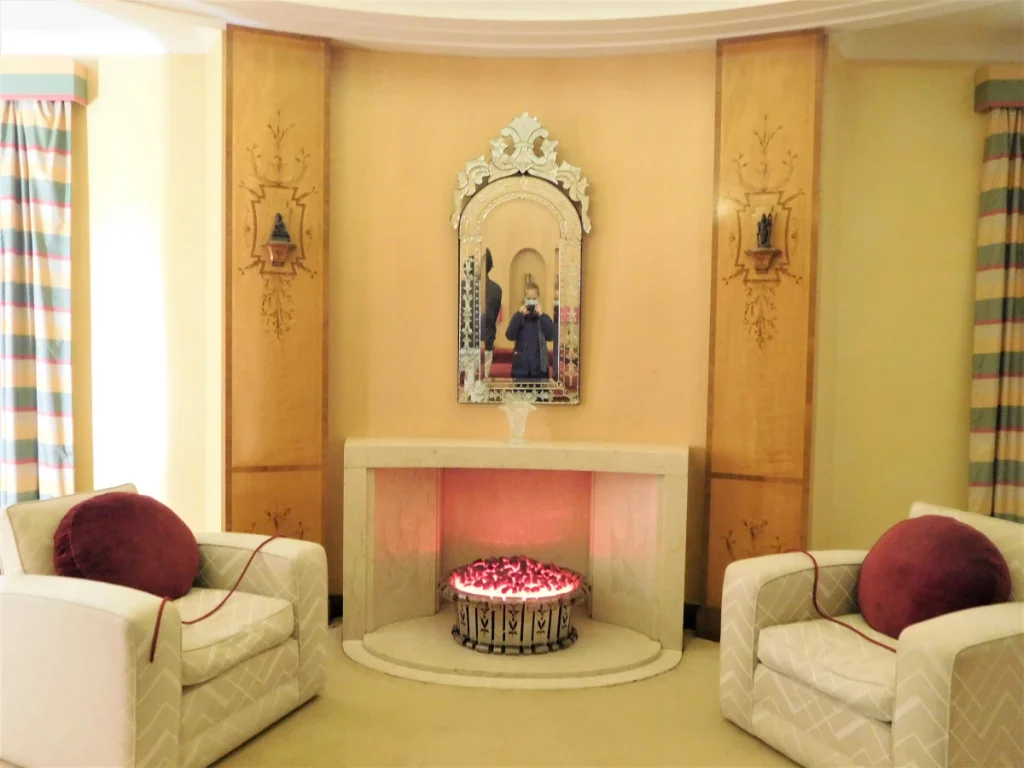


This was Virginia Courtauld’s private bedroom with her own golden en-suite bathroom. The bathtub with the statue of the goddess Psyche, who was the wife if Eros and goddess of the soul sits within a golden mosaic and is the focal point of the bathroom.
Mah-Jongg
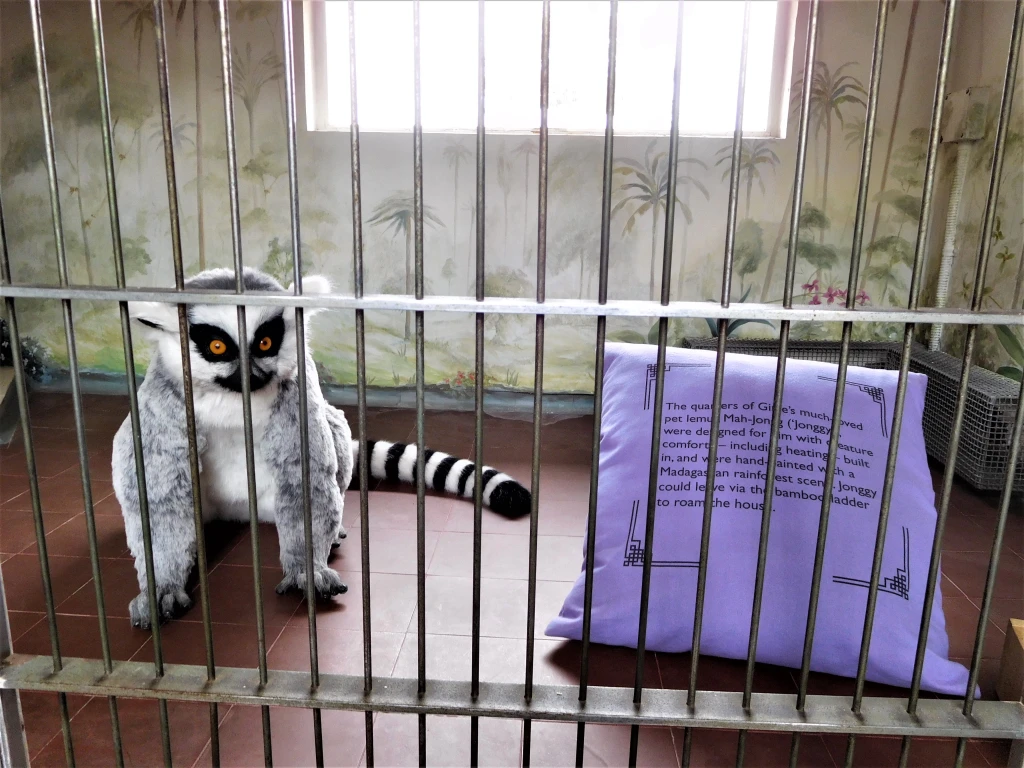
The family had a pet, Mah-Jongg the lemur. This is where he used to live. However, this cage was actually just his sleeping quarters as the lemur had access to the entire house during the day and was able to roam around freely.
The Entrance Hall
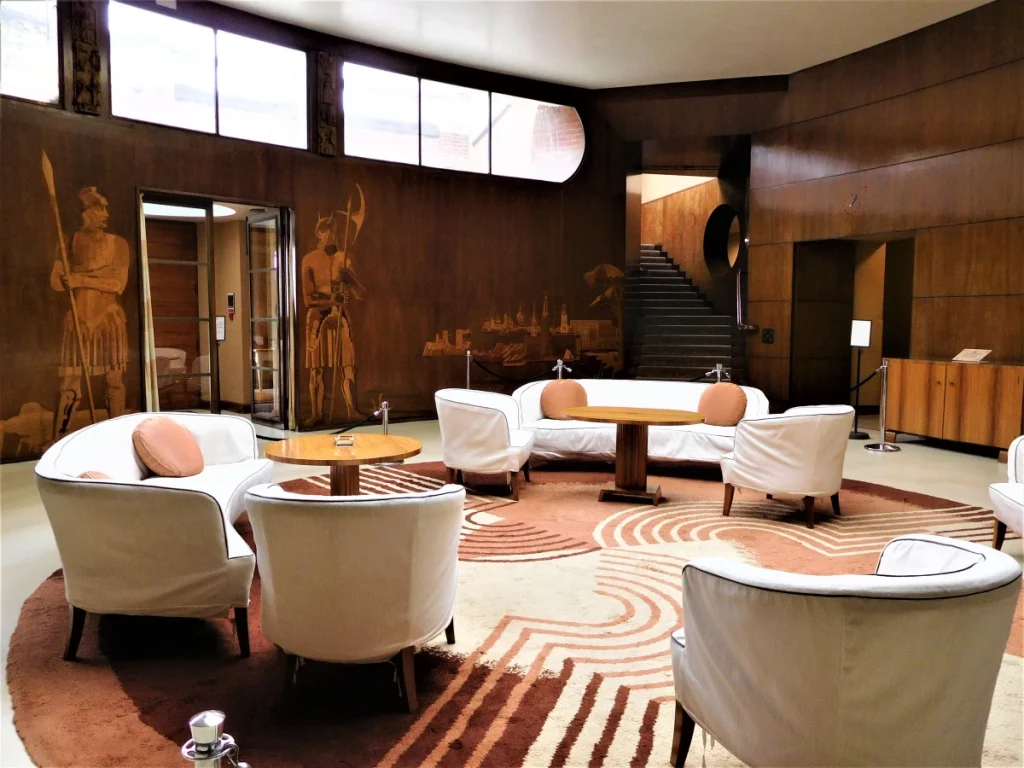
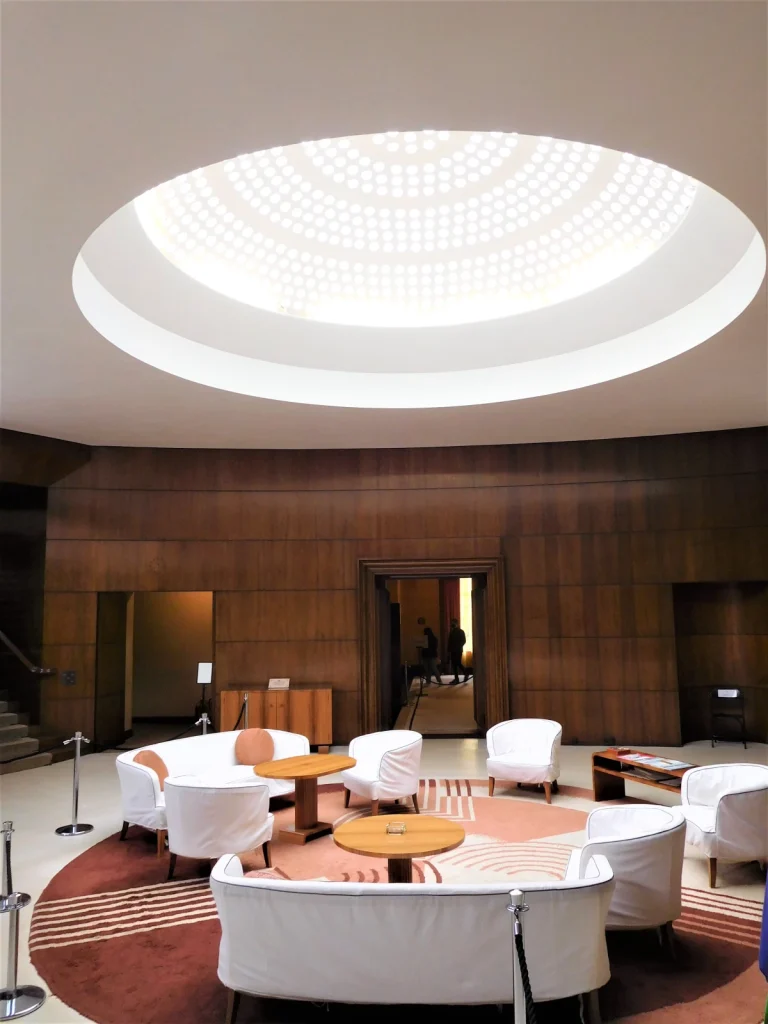
Visitors enter the house through the great hall, at least when I visited Eltham Palace. However, the Courtauld’s would have welcomed their guests in this entrance hall.
The entrance hall is the heart of the house and from here many of the rooms such as the dining room, kitchen and so on can be accessed from here. It is one of the dominant art deco rooms of the house, especially the ceiling, which lets in plenty of light and is a real room feature.
THE GARDENS
The house is set in beautiful green surroundings and visitors can wander around and enjoy 19 acres of differently themed gardens and landscapes.
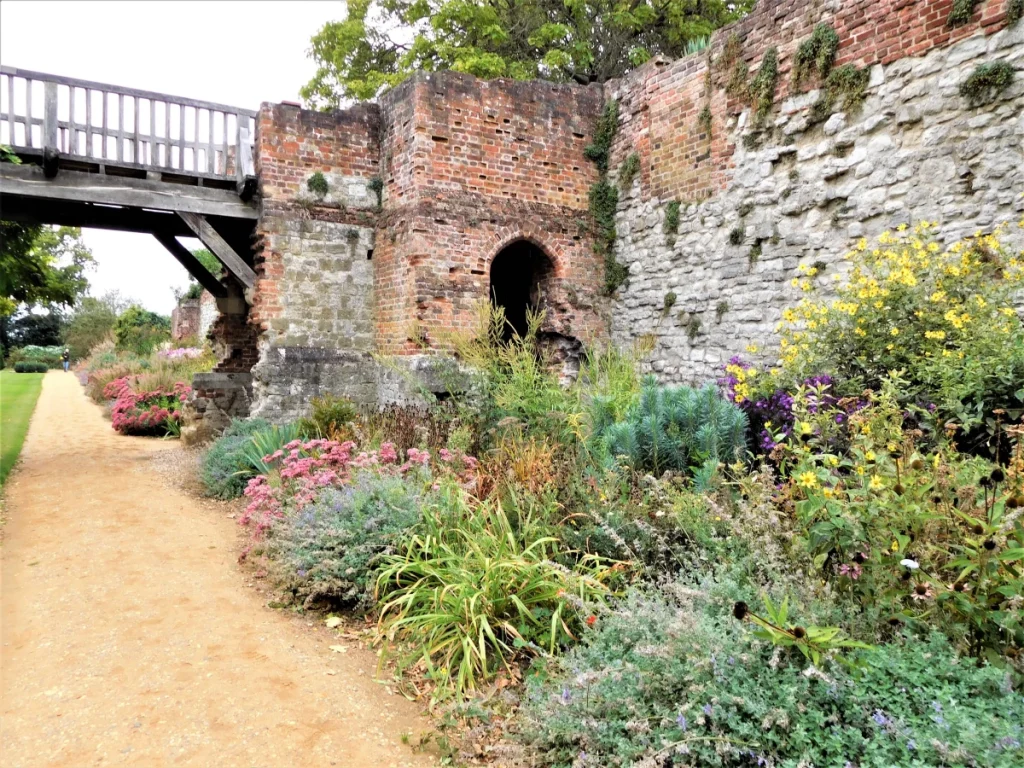
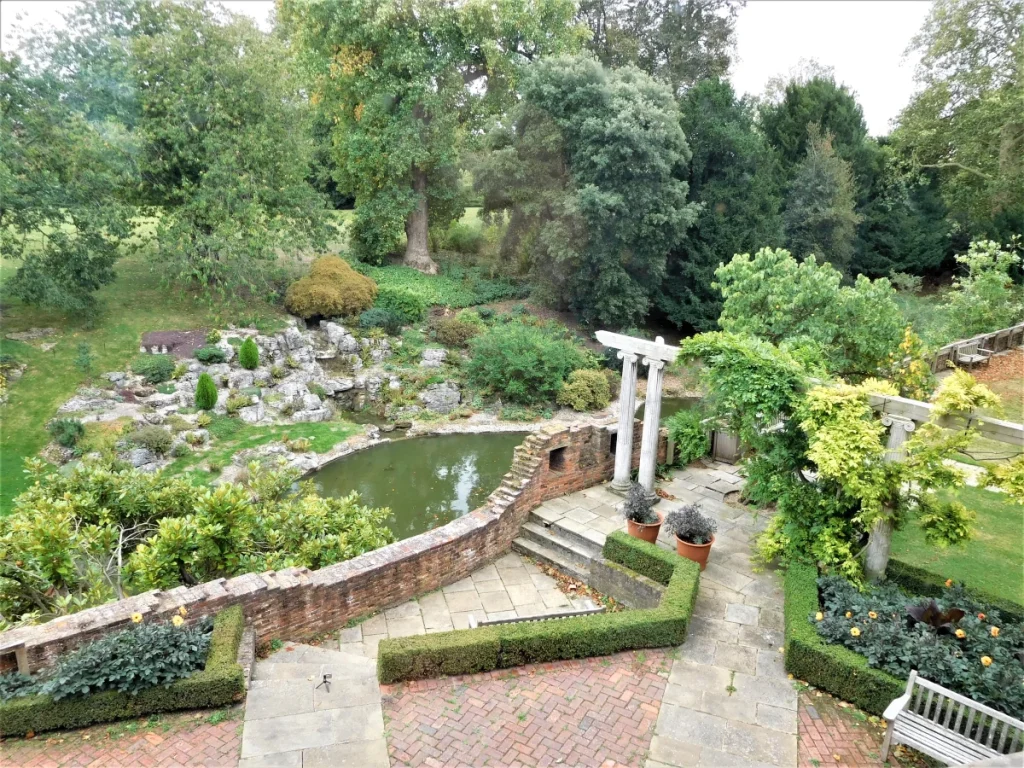
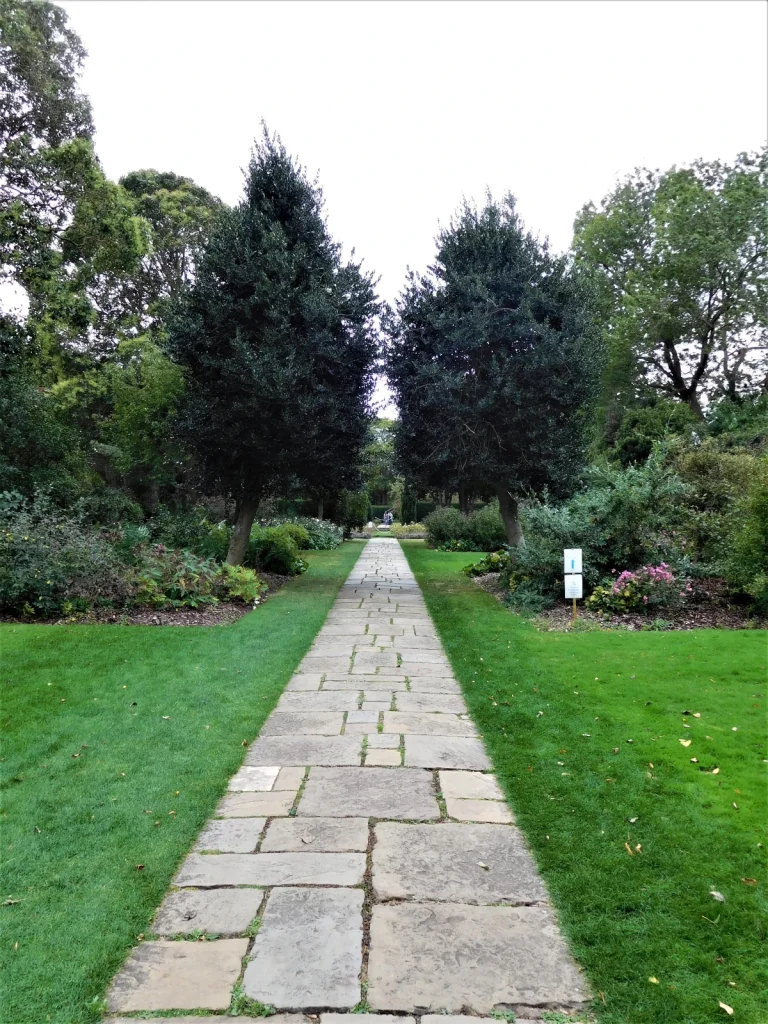
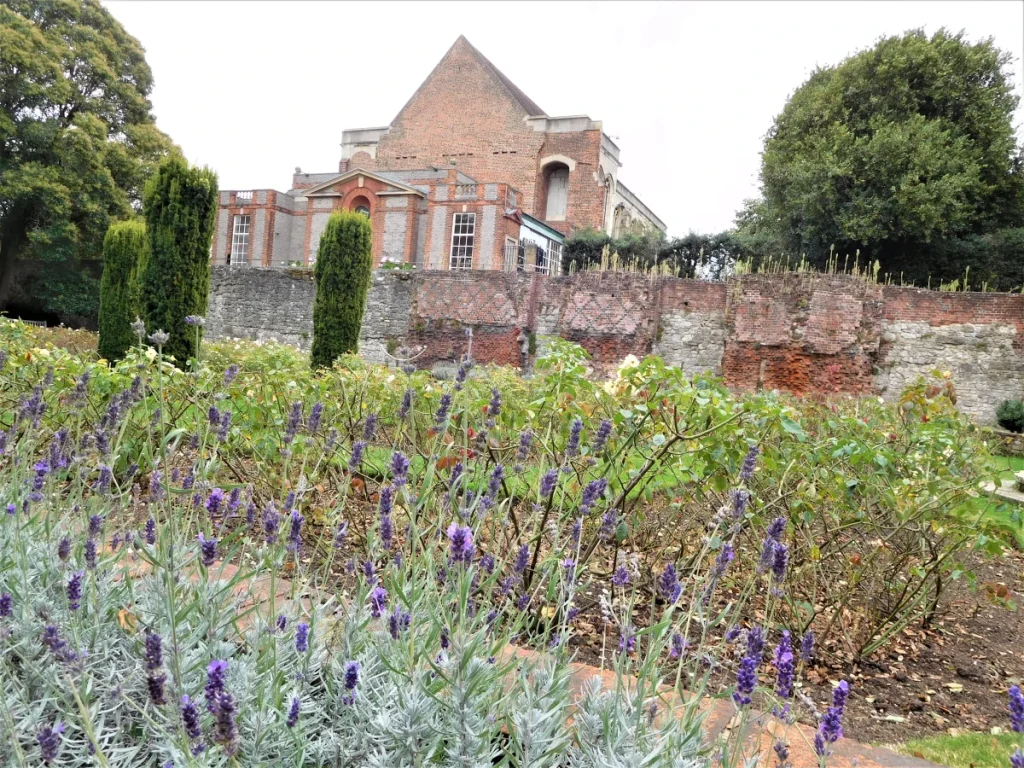
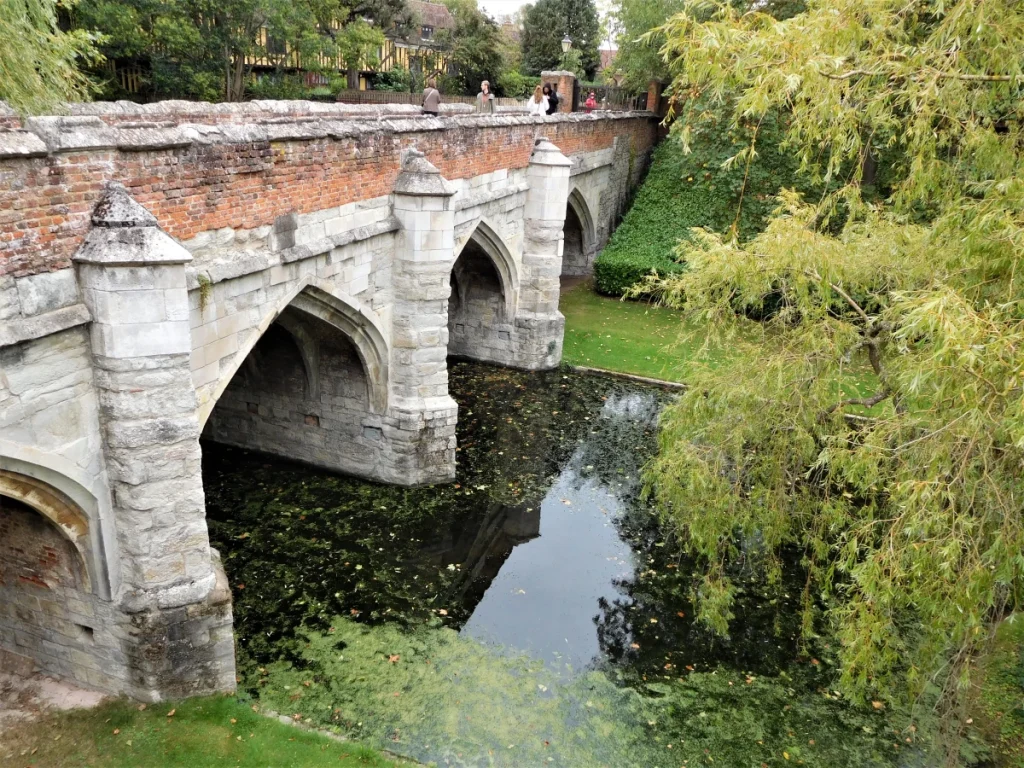
One of the main features of the garden must be the rock garden with the many pools and little cascades that run into the moat and of course the moat itself.
Another part of the gardens that should not be missed is the fantastically smelling rose garden and a wander around the moat while crossing London’s oldest working bridge is a must.
VISITOR CENTER, CAFE AND SHOP
There is of course a visitor center, cafe and shop available just when you enter the site as well as a wooden outdoor play area for the kids. Therefore, you can either enjoy a beverage and perhaps some lunch and cake before or after your tour of the house and gardens.
Due to Covid, the cafe was closed as well as the wooden play area. However, the shop was still open and so were the toilets, which is always important. 🙂
- Opening times: Gardens – open daily from 10 am – 5 pm, House – open daily from 11 am – 5 pm
- Admission: Adults £17.30, Children (5 – 17 years) £10.40, Concession £15.60, Free for English Heritage members
- For more information please visit: English Heritage
- How to get there: By car – Court Yard, Eltham, Greenwich, London, SE9 5QE/ SE9 5NP for Sat Nav. Get of junction 3 on the M25 and then go on the A20 to Eltham. By Train – The closest train station is Mottingham, about 1⁄2 mile walk (10 min) away from the palace. By Bus – Tfl busses 124, 126, 160 and 161 stop close by.
FINAL THOUGHTS …
I heard of Eltham Palace many times before I came to visit and actually used to pass it on my way to university, I completed by Bachelors and Masters at the University of Greenwich. But I never really thought it was worth a visit if you have all those other palaces around London, such as Hampton Court, the Tower of London and so on.
Boy was I wrong! I am so glad I did go and visit as of course it is nothing like the other palaces around London at all.. It is an art deco grand house, a hidden and not well known gem.

